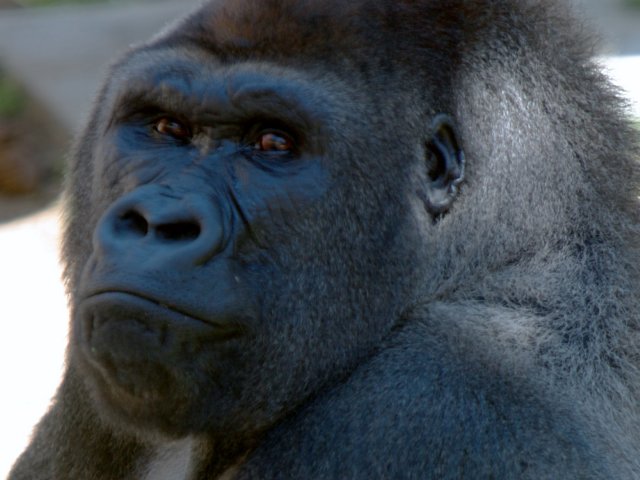Is an Animal a Wolf or a Wolf hybrid?
 As you know, positive identification of a wolf is only possible through skull measurements once the animal is dead. But there are some distinctive phenotypic and behavioral characteristics that we look for when evaluating whether an animal is a wolf or wolf hybrid.These are:
As you know, positive identification of a wolf is only possible through skull measurements once the animal is dead. But there are some distinctive phenotypic and behavioral characteristics that we look for when evaluating whether an animal is a wolf or wolf hybrid.These are:Length of hair is an important clue. Wolves have a very characteristic long-hair mane and ruff. The mane starts at the back of the head and continues down the center of the back to the base of the tail. Dogs have even-length hair and with the possible exception of some huskies, they don't have a mane.
Wolves have pink/reddish colored hair between their toe pads. Their ears are short and erect.
Wolves have yellow eyes, large feet, long legs, a long muzzle and a slender chest. Wolves' tails hang straight down. They have a dense undercoat, even in the groin area.
There also is a wide variety of color in wild wolves, so it cannot be the sole determinant.
Finally, behavior is one of the biggest clues. Wolves are shy and avoid eye contact with humans other than their owner. They generally listen to and take commands only from their owner. They will leave the room or hide when a "new" person walks in.
Obviously, not every hybrid will exhibit all these qualities. The more of them exhibited, the more likely the animal has a high degree of wolf lineage.
Technorati Tags: wolf






























